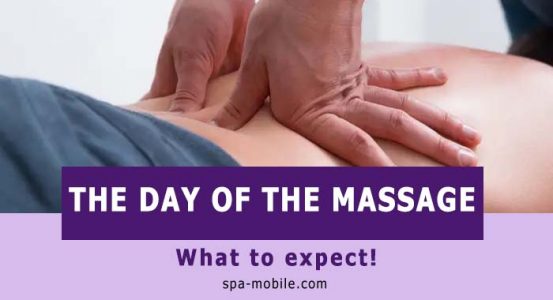- What are the different types of therapeutic massage?
- What techniques are used in a therapeutic massage?
- The benefits of therapeutic massage to relieve stress
- What are the other benefits of a therapeutic massage?
- How does a therapeutic massage work?
- What’s the difference between therapeutic massage and traditional massage?
Three-quarters of Canadians believe stress negatively affects their physical and mental health.
Stress is an ongoing health pandemic and detrimental to the Canadian economy, costing billions of dollars every year.
Millions of working days are lost every year due to work-related stress.
While you might immediately think that days off are good, why should you care?
Stress at work not only reduces productivity through absenteeism and reduced work capacity caused by stress but also affects your general well-being and immediate, medium and long-term health.
Massage therapy is a highly effective intervention that can help you reduce stress.
Some people may consider massage a luxury.
But constant stress should not be a normal part of life.
Working beyond our capacity, over and over again, with stress factors piling up, takes its toll.
We all know that high-stress levels are ubiquitous in our society, but that doesn’t mean we should ignore them.
Your health is your most important priority.
You can’t be at your best without excellent health, and you can’t take care of your loved ones without good health.
Ignoring the spiral of stress only leads to more severe health problems.
Managing your health with massage therapy is not a luxury; it’s an investment in your now and future.
Spa-Mobile is experienced in therapeutic massage interventions to reduce stress.
What are the different types of therapeutic massage?
In physiotherapy, therapeutic massage plays an essential role.
It helps to relax tense muscles, improve muscle tone, and stimulate flexibility, all of which are essential for injury recovery.
Massage therapy is also essential in integrative health approaches.
It complements treatments for wounds, cancer and other medical conditions.
Its versatility makes it an effective adjunct in a variety of health scenarios. Health professionals often recommend it as part of a broader treatment strategy.
Under the term therapeutic massage, you’ll find various massage techniques and options.
Many massage therapists can offer various treatment types, offering different levels of pressure and concentration to suit individual needs.
Swedish massage is one of the most common types of massage and aims to provide a relaxing treatment for your mind and body.
It is a full-body massage that works on different muscle groups to reduce pain or tension and improve circulation.
For a massage with higher levels of pressure, consider deep-tissue massage.
It’s ideal for anyone struggling with knots or who is more active and looking to support their body in recovery.
It’s an excellent option for relieving high levels of physical pain, but it can also help reduce stress and side effects such as headaches.
Athletes may choose to consult someone who offers sports massage.
This type of massage supports high training levels and can help the body recover from injury.
Finally, shiatsu is a type of massage often associated with acupuncture.
It uses the fingers on your pressure points to release tension and help energy flow back into your body.
What techniques are used in a therapeutic massage?
At Spa-Mobile, our massage therapists master a wide range of massage techniques.
Standard massage techniques used during a therapeutic massage include:
- Effleurage in a therapeutic massage is a caressing movement generally performed from the bottom upwards on the part of the body.
Pressure can be adjusted according to the desired treatment result.
Effleurage is used in therapeutic massage to increase blood flow, accelerate lymphatic drainage and raise soft-tissue temperature. - Kneading is a standard massage technique used in therapeutic massage.
Kneading can be performed to treat muscular ailments or to provide a purely relaxing effect.
During the kneading technique, tissues are compressed and manipulated.
Kneading can be performed in circular movements on many areas of the body.
Kneading stimulates venous return, increases tissue mobility and promotes cellular exchange. - Lymphatic drainage is a massage technique used in many different types of massage.
Lymphatic drainage is used in a therapeutic massage that can have a therapeutic effect while aiming to stimulate the lymphatic system.
The lymphatic system removes toxins from the body and helps eliminate swelling and excess fluid. - Ramassage is a specific technique that involves compressing, lifting, squeezing, and releasing tissues.
It aims to mobilize soft tissue and is particularly effective with other techniques. - Skin rolling is performed as part of a therapeutic massage using both hands on soft tissue.
Rolling helps mobilize restricted and scar tissue.
Skin rolling increases temperature and helps stretch fibrous tissue.
The benefits of therapeutic massage to relieve stress
Therapeutic massage has many benefits for your physical and mental health.
When muscles are manipulated during a massage, it helps to relieve tension that has built up in the affected muscles.
It soothes the underlying muscle tension, and all connective tissue is loosened as the muscles relax.
This helps relieve joint pain.
It also reduces inflammation and the additional pain associated with it.
Regular therapeutic massage can benefit people from all walks of life, including athletes, blue-collar workers, office workers, the disabled, pregnant women, and those undergoing medical treatment.
A qualified massage therapist, aware of the person’s condition, can adjust the massage technique to ensure optimum safety and benefits.
What are the other benefits of a therapeutic massage?
Beyond its immediate calming effects, therapeutic massage offers profound mental health benefits that make it a powerful adjunct to stress and anxiety management.
The practice also encourages mindfulness and body awareness, helping recipients to connect with their physical sensations, improve their mood and identify stressors.
This heightened awareness can enable individuals to better manage their stress responses, promoting resilience and a more balanced state of mind.
Therapeutic massage also increases circulation, stimulating blood flow to promote healing and enabling lymphatic drainage.
Research shows that massage reduces blood pressure, heart rate and cortisol levels.
Muscle stimulation causes the brain to release feel-good chemicals such as serotonin.
These happy hormones are also known to reduce insomnia and improve sleep quality.
This makes it the ultimate relaxation technique for reducing stress, anxiety and depression.
Massage therapy improves blood circulation, delivers essential nutrients to muscle cells and helps eliminate waste products.
This is particularly beneficial in managing arthritis and other inflammatory disorders.
Furthermore, massage therapy triggers a relaxation response that lowers heart rate, respiratory rate, and blood pressure, boosting the immune system and alleviating the physical effects of stress.
How does a therapeutic massage work?
Although each service has its process, your massage therapist will usually ask you to fill in a short questionnaire or answer some questions to identify the particular issues or areas of tension you’d like her to focus on.
Once you’ve settled in and enjoyed a refreshing drink, it’s time for you to begin your massage.
The atmosphere is designed for tranquillity, with soft music, gentle lighting, an ideal room temperature, and a comfortable massage table.
You’ll be asked to get ready and remove any unnecessary clothing.
This is the time to let your thoughts drift away like clouds and forget the stresses and strains of everyday life.
During your treatment, your masseuse will use various techniques and hand movements to relax your body and mind.
The exact products used vary by service, but jojoba, coconut, and almond oils are commonly used.
Each soothes, moisturizes and eliminates dry skin, leaving your skin soft and pampered.
The objective of the massage may vary from one massage therapist to another, so it’s important to discuss any sore spots with your masseuse to get the most out of your treatment.
Overall, the aim is to bring you a therapeutic benefit, whether sport-related or stress-related.
Many people opt for a single-session therapeutic massage, while others undergo several sessions to improve muscle tone and increase flexibility.
It can also be used as a complement to many other health treatments.
What’s the difference between therapeutic massage and traditional massage?
The two most common types of massage are relaxation and therapeutic, so they often need clarification.
Relaxation massage aims, as the name suggests, to relax and de-stress the mind and body.
Although it has some physical benefits, its main advantage is your mental and emotional health.
Relaxation massages are generally slow, gentle, flowing movements.
As the name suggests, therapeutic massages are also designed to soothe the body.
They aim to treat physical pain and dysfunction.
Therefore, the emphasis is not on how the recipient feels or enjoys the massage but on correcting or preventing bodily problems.
Therapeutic massages often use deep movements that can sometimes cause slight discomfort to the patient.





